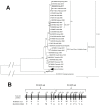Local transmission of chikungunya in Rome and the Lazio region, Italy
- PMID: 30576334
- PMCID: PMC6303016
- DOI: 10.1371/journal.pone.0208896
Local transmission of chikungunya in Rome and the Lazio region, Italy
Abstract
On September 7, 2017, three potentially autochthonous cases of chikungunya were notified in the Lazio region. An Outbreak investigation based on established surveillance system data and molecular analysis of viral variant(s) were conducted. Epidemiological analysis suggested the occurrence of 3 main foci of local transmission. The major focus involved 317 cases with epidemiological link with the area of Anzio. The other two foci occurred in Rome (80 cases) and Latina (8 cases). Cumulative incidence in Anzio and Latina were 331.4 and 7.13 per 100,000 residents, respectively. Cumulative incidences ranged from 1.4 to 14.3/100,000 residents in Rome. This is the first report of a chikungunya outbreak involving a densely populated urban area in a western country. The outbreak probably started in Anzio, spread by continuity to neighbouring villages, and then to the metropolitan area of Rome and to the Latina area favoured by the touristic nature of the Anzio area.
Conflict of interest statement
The authors have declared that no competing interests exist.
Figures




References
-
- Chretien JP, Anyamba A, Bedno SA, Breiman RF, Sang R, Sergon K, et al. Drought-associated chikungunya emergence along coastal East Africa. Am J Trop Med Hyg 2007; 76: 405–7. - PubMed
Publication types
MeSH terms
LinkOut - more resources
Full Text Sources
Other Literature Sources
Medical

